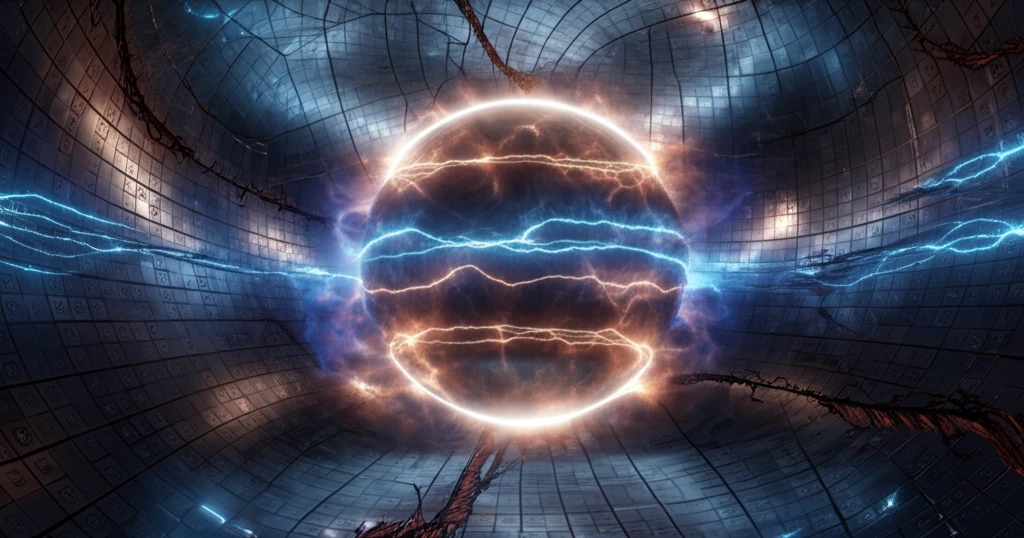
Harnessing Fusion: The Quest to Understand Energetic Electrons in Spherical Tokamaks
"Scientists are exploring the behavior of energetic electrons during plasma merging in spherical tokamaks, a crucial step toward efficient fusion energy."
The pursuit of sustainable and clean energy sources has led scientists to explore fusion energy, a process that powers the sun and stars. Among the various approaches to achieving controlled fusion on Earth, the spherical tokamak (ST) stands out as a promising candidate. STs, characterized by their compact size and high efficiency, offer a unique platform for studying plasma physics and developing fusion technologies.
One of the critical challenges in ST research is understanding and controlling the behavior of energetic electrons within the plasma. These electrons, accelerated to high speeds during plasma merging events, play a significant role in heating the plasma and influencing the overall stability of the fusion reaction. Harnessing the energy of these electrons is crucial for achieving sustained fusion and realizing the full potential of STs.
Recent research conducted at the University of Tokyo Spherical Tokamak (UTST) has shed new light on the generation and behavior of energetic electrons during plasma merging. By employing advanced diagnostic techniques and innovative experimental setups, scientists have gained valuable insights into the mechanisms that govern electron acceleration and energy transfer within the tokamak. These findings could pave the way for more efficient and controlled fusion reactions in the future.
Why Study Energetic Electrons in Spherical Tokamaks?

Spherical tokamaks represent a cutting-edge approach to fusion energy, offering several advantages over traditional tokamak designs. Their compact size and efficient plasma confinement make them ideal for both research and potential future energy production. Understanding the behavior of energetic electrons in these devices is crucial for several reasons:
- Improved Plasma Stability: Energetic electrons can influence the stability of the plasma, affecting its confinement and susceptibility to disruptions. Studying their behavior can help develop strategies for maintaining stable plasma conditions, crucial for sustained fusion.
- Enhanced Fusion Performance: Optimizing the generation and utilization of energetic electrons can lead to enhanced fusion performance, increasing the energy output and reducing the energy input required to sustain the reaction.
- Advancement of Fusion Technology: Research on energetic electrons in STs contributes to the broader advancement of fusion technology, providing valuable insights and techniques that can be applied to other fusion devices and approaches.
The Future of Fusion Energy: Harnessing the Power of Energetic Electrons
The research on energetic electrons in spherical tokamaks represents a significant step forward in the quest for clean and sustainable fusion energy. By understanding and harnessing the behavior of these high-energy particles, scientists can pave the way for more efficient, stable, and powerful fusion reactors. As fusion technology continues to advance, the insights gained from these experiments will play a crucial role in realizing the dream of a future powered by fusion.
